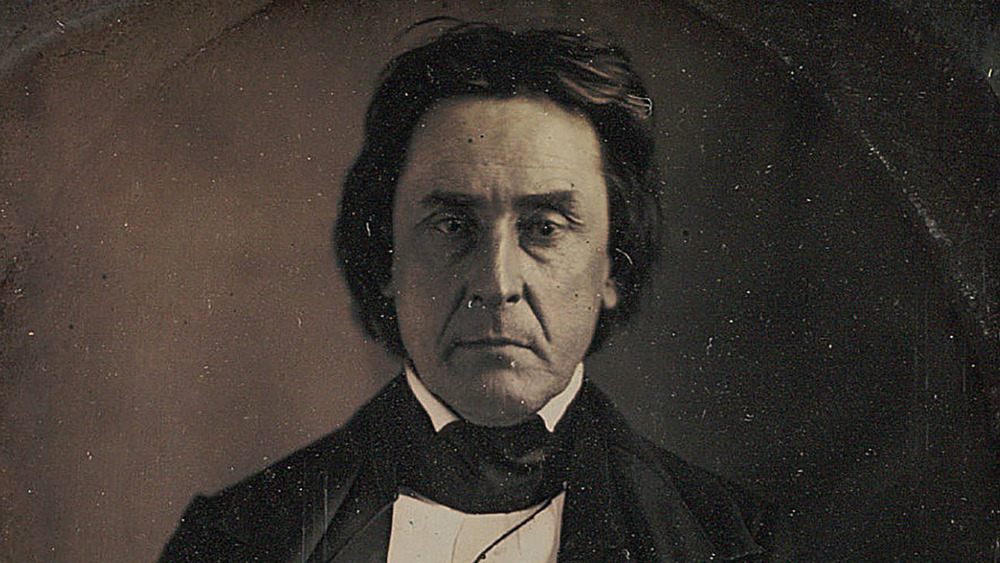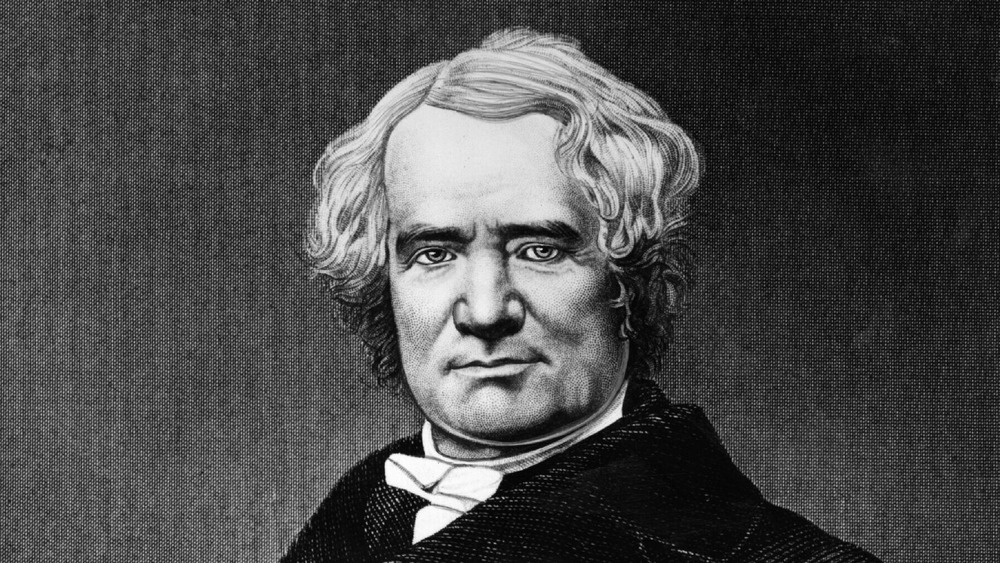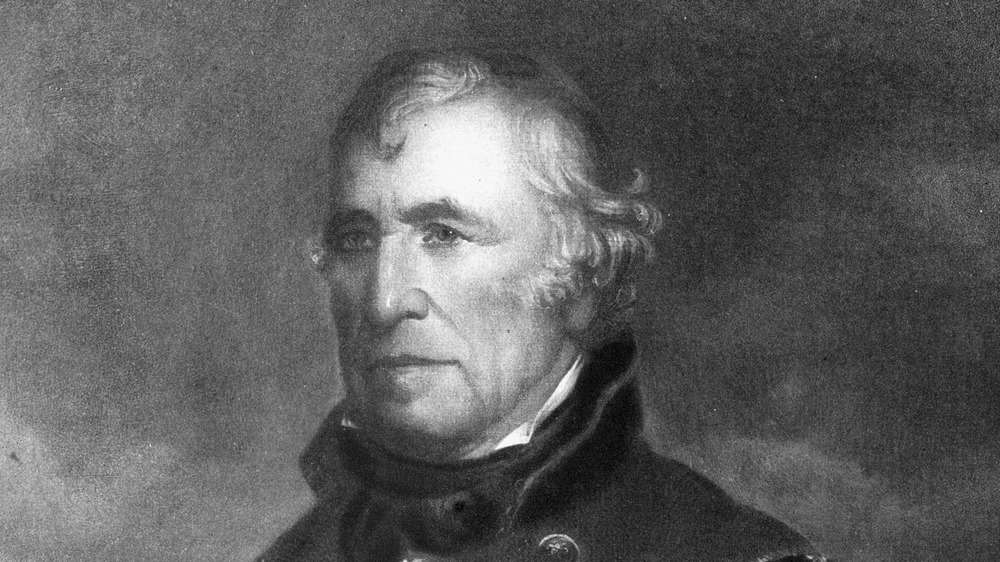The Surprising Story Of The Man Who Was President For One Day
President James K. Polk couldn't leave the White House fast enough, as far as he was concerned. In 1848, as Polk's first term was coming to a close, he reiterated that he had no intention of running for a second term. If he had, however, he would have had the support of the Democratic Party, according to the University of Virginia's Miller Center. Polk wrote in his diary that he felt "exceedingly relieved" to rid himself of the duties associated with being president, says the White House Historical Association. He had every intention of ending his term at noon on March 4, 1849 — this was before Inauguration Day moved to January 20 in 1937 — and not a moment later. On that morning, Polk signed the last of the legislation on his desk at the White House, and at 6:30 a.m. recorded in his diary, "Thus closed my official term as President."
That year, however, Inauguration Day fell on a Sunday, and incoming president Zachary Taylor was a deeply religious man, who refused to be sworn in on the Sabbath, as the Library of Congress tells us. Instead, Taylor and his vice president, Millard Fillmore, would take the oath 24 hours later, at noon on Monday, March 5. But Polk's urgency to vacate the premises and Taylor's pious ways presented a new question: Who would serve as president in that 24 hour gap? The answer lies in a two-term senator from Missouri by the name of David Rice Atchison.
David Rice Atchison becomes president for a day (sort of)
Throughout his Senate career, Atchison was popular among his colleagues, and they elected him 13 times to serve in the role of president pro tempore, the second-highest ranking official in the Senate. It's a position that is accounted for in Article One, Section Three of the Constitution, which provides that the vice president of the United States is the president of the Senate (regardless of not being a senator), and mandates that the Senate must choose a president pro tempore to act in the vice president's absence. It was a stipulation that mattered greatly in the early days of the republic, when the vice president regularly presided over Senate sessions, according to National Geographic.
On March 2, 1849, Vice President George M. Dallas (pictured above) took leave from the Senate for the remainder of the session, and the Senate once again elected Atchison as president pro tempore. That designation, combined with a hiccup in the calendar, allowed Atchison to make the case he was president for a day just two days later. "It was plain that there was either an interregnum [a period where there is no government] or I was the President of the United States being chairman of the Senate. ... A great many such questions are liable to arise under our form of government," Atchison told the Plattsburg Lever, according to The Presidential Book of Lists. He added, however, that he "made no pretense to the office."
Atchison toys with the ambiguous presidency
That might not have been strictly true, however. By some press accounts, Atchison took the role so seriously that he "sent to the White House for the seal of the great office and signed one or two official papers as President," according to Senate history. Some of Atchison's Democratic colleagues reportedly even made the playful suggestion that he could call upon the army to prevent Taylor (pictured above), a Whig Party member, from taking office the next day. Some scholars argue that Atchison wasn't president and the nation was actually without one for 24 hours. For the most part, Atchison didn't take his one-day presidency on a technicality all that seriously. He noted that he was never sworn in as president and later wrote, "I never for a moment acted as President of the U.S." He did, however, like to joke that he had "the honestest administration this country ever had," according to History.com.
Atchison's life became emphatically less humorous as he left the Senate in 1855 and took up arms to defend slavery. Atchison led the Missouri "Border Ruffians" on raids into the Kansas Territory, and he fought for the Confederacy at the outset of the Civil War, The New York Times reported at the time.
On January 26, 1886, at the age of 78, Atchison died at his Missouri home. He got one last word in on the matter with "President of the United States for One Day," (at Find a Grave) etched into his grave marker.


